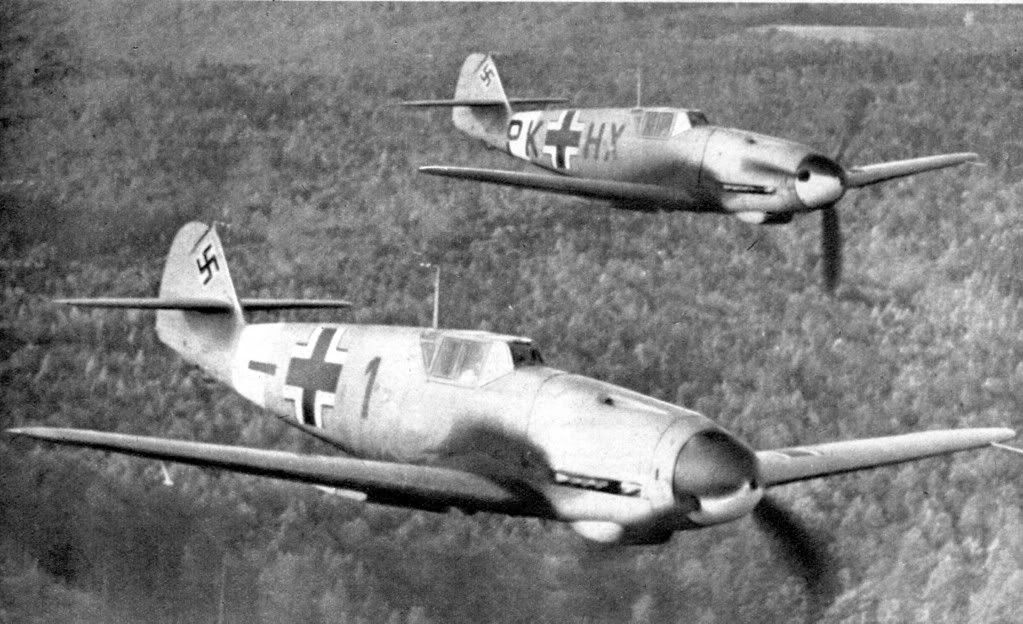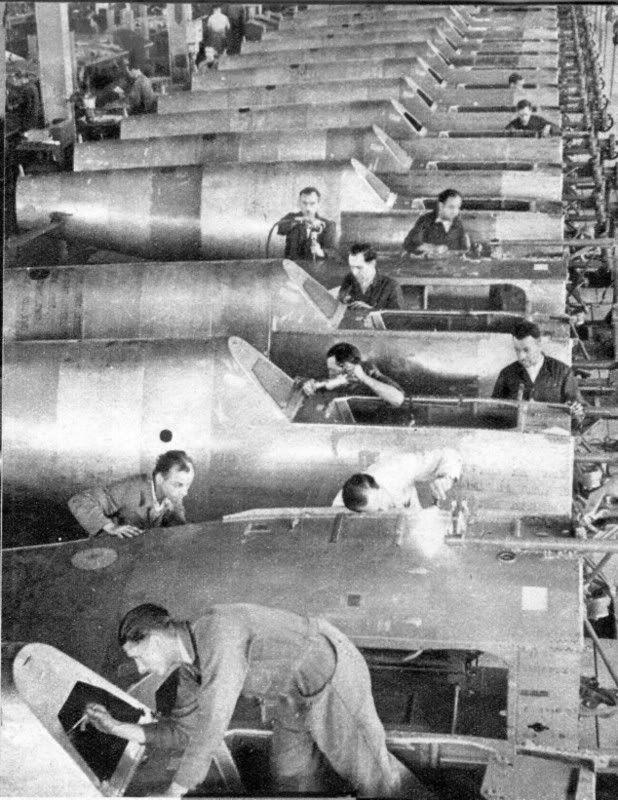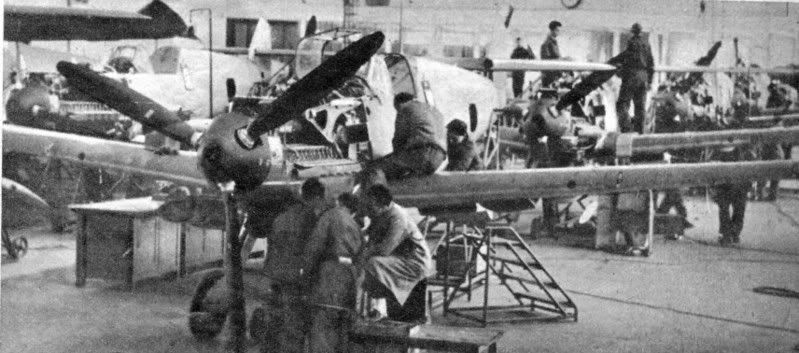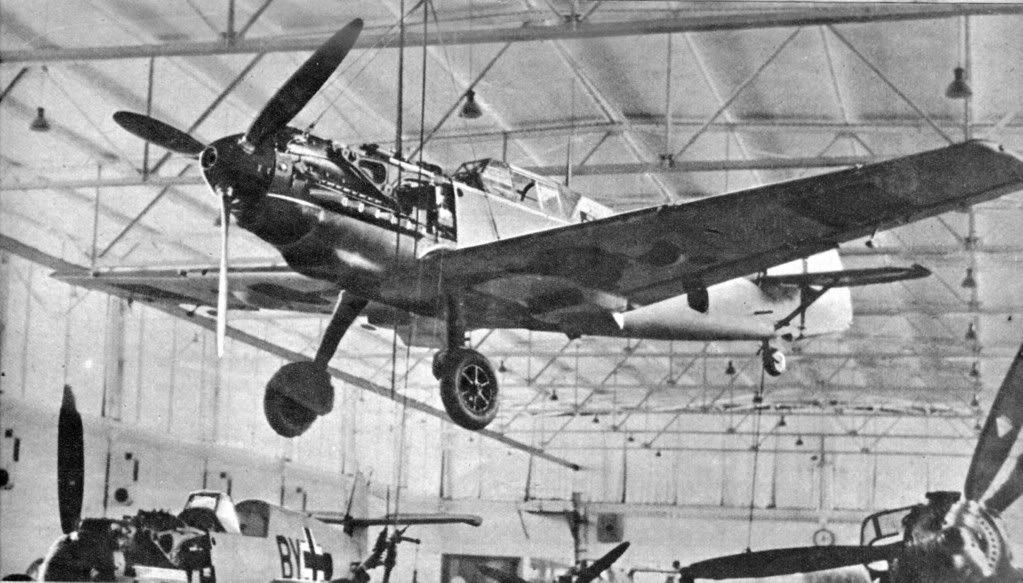I think the fastest variant was the G-10 .
the destroyed ones.
the destroyed ones.
???..Meaning what ?
Meaning one does not have to fight that which is already destroyed.
ok as you all might now or gess i am rather new with all this, now i am very confused as i was looking at two pics, one being the bf109 the other being the me109 both aircraft look the same and i must admit i have never been able to tell them apart, i always thought they were the same both being the 109’s just one is the me to wich i thought stood for Messerschmitt so bf stands for ?,iv done a little research and found this.
The BF109 E was the Luftwaffe’s standard single-seat fighter for the first three years of the war and was able to outfight or outrun virtually all opposition. From the summer of 1942 the Messerschmitt 109G powered by a Daimler-Benz producing 1,800 hp with water-methanol injection and giving a speed of 685 km/h (428 mph), entered service in Russia and North Africa before being deployed in every other theater. With its standard armament of a cannon and two machine guns the Messerschmitt 109, like the Spitfire , saw action throughout the war.
Bearing in mind that the Messerschmitt 109 was to become one of the Royal Air Force’s major opponents in the Second World War, it is ironic that the prototype had a British Rolls-Royce Kestrel engine when it made its first flight in September 1935. The power plant was, however, soon changed. In any case, Rolls-Royce was using a German built Heinkel He 70 to flight test some of its latest engines at about the same time.
this still dont help me why call one bf and another me, gess im a little slow :rolleyes:
they are both 109’s but what is the diffirance, just the two letters in front or what ?

this is the bf109

and this is the me109.
they look the same but how can you tell one from the other?? please help.
i did do a little research but didnt find out to much just what is below…yes i know they the same pic but they called bf and me
The BF109 E was the Luftwaffe’s standard single-seat fighter for the first three years of the war and was able to outfight or outrun virtually all opposition. From the summer of 1942 the Messerschmitt 109G powered by a Daimler-Benz producing 1,800 hp with water-methanol injection and giving a speed of 685 km/h (428 mph), entered service in Russia and North Africa before being deployed in every other theater. With its standard armament of a cannon and two machine guns the Messerschmitt 109, like the Spitfire , saw action throughout the war.
Bearing in mind that the Messerschmitt 109 was to become one of the Royal Air Force’s major opponents in the Second World War, it is ironic that the prototype had a British Rolls-Royce Kestrel engine when it made its first flight in September 1935. The power plant was, however, soon changed. In any case, Rolls-Royce was using a German built Heinkel He 70 to flight test some of its latest engines at about the same time.
Bf stands for Bayrische Flugzeugwerke, which means Bavarian Aircraftfactories. ME is an abbr. for Messerschmitt (after Willy Messerschmitt, the c.e.o of Messerschmitt 
Messerschmitt means, btw., KNIFESMITH, although the ending SCHMITT is an older word for Schmied, which actually means smith.
there are some very distinguishing things which help to say which one O nine you have in front of you. the E (EMIL) has, f. e., struts for the tail-wings, another canopy and much more things that differ from a late G-model.
jens
hay thanks for that i didnt mean to put it in here but that what i asked for thanks m8:D
you`re welcome! IMHO Bf was the official abbr. and ME was inofficial.
jens
BF is the Bayerische Flugzeugwerke (Bavarian Aircraft Works), which Willy Messerschmitt joined in the 1920s. In the late 1930s, the company was changed to Messerschmitt AG, with Willy becoming Director. Those aircraft that had been designed before this retained the Bf (108, 109, 110 - can’t remember any others) on official documents, and the ones after became Me. However, the two became pretty much interchangeable.
r sweet thanks for that so they are the same just the me came out after the company changed with willy messerschmitt. thank you
Me-109TL.
What about this variant ?
The Messerschmitt 109 Turbo-Lader Strahltriebwerk ( turbocharger jet engine) was proposed on January 22, 1943 at an RLM conference as a back-up for the Me 262, of which only three prototypes had been completed at the time.

In order to cut down on design and production time, various components from existing aircraft was to be used. The fuselage from the Me 155B high-altitude fighter was to be used (with a new nose and tail section), the wing was from the Me 209 project II and the undercarriage came from the Me 309. The armament was to be two MG 151/20 20mm cannon (120 rounds each) and two MK 103 30mm cannon, all in the nose.

A later proposal included two MK 108 30mm cannon could be installed in the wing roots.
The performance was estimated to be better than the Me 262 due to the Me 109 TL’s narrower fuselage. Following intensive study, by March 1943 it was decided that so many modifications to the various components would be needed that no time would be gained over the Me 262 development, thus the project was abandoned.

by March 1943 it was decided that so many modifications to the various components would be needed that no time would be gained over the Me 262 development, thus the project was abandoned.
And I think that aforesaid decision was right, my dear Mr. Panzerknacker – if only because some components for this airplane were overtaken from aircraft that were paper projects themselves – nose wheel of the Me 309, main wheels of the Me 155 B-1, wings of the me 409… for heavens sake - a complete design-patchwork! Therefore, no – thank you, I stay with those classicistic variants. You know, that old fashioned just-point-and-shoot airplane with “a rasping growl combined with the whistle of its hydraulic supercharger” - as poetically described by Mr. Michael Jerram. 

Messerschmitt Bf 109 F
Anyhow, thanks for your very informative post, my dear Mr. Panzerknacker. All the best!
No problem Librarian, Actually the info about the Me-202/309/509 or another alternatives seems always to be insuficient. nice one that Messers with the PK in the side. hehehe
nice one that Messers with the PK in the side. Hehehe
You like it, my dear Mr. Panzerknacker? If so, don’t worry - here is another one for you. Yes, I know: this is not a photo of that famous… well, international airplane notability PK + HX, but nevertheless… ;)Those immortal dynamic outlines are clearly visible on this excellent Bf 109 photo-study.

Messerschmitt Bf 109 F – from beneath!
And some other forgotten moments connected with the Bf 109 are evoked on this photography too: Augsburg, 1941 – assembly line of the Messerschmitt GmbH Regensburg – Obertraubling.

Messerschmitt Bf 109 – assembly line in Regensburg
And don’t worry – these snapshots are just the beginning! After all these years they surely do deserve a proper public presentation.
In the meantime, as always – all the best! 
Very good ones. 
Is worth to mention that the F-0 and F-1 had some structural troubles with his tail section.
It is worth to mention that the F-0 and F-1 had some structural troubles with his tail section.
You mean when three pre-production F-series machines were lost? Yes, I know for that problem, but as far as I know troubles with the Bf 109 tail-buffeting were registered even before, more precisely in 1938, when the Jagdgruppe J-88 in Spain was re-equipped with the Bf 109B fighters. Although this problem was resolved with a new cantilevered tail design that was introduced on a Bf 109 E fighter type, generally less known fact is that during the process of continuous improvement of the Bf 109 model some pure engineering pretermissions unfortunately occurred, mainly due to unprecedented scurry toward previously neglected, for true mass-production essentially important aluminum alloy profile sheets, rivets and screws standardization (for example, shrinkage from 20 different light alloy sheet types to only 7, and curtailment from 340 different types of screws to only 156) – that was suddenly highly emphasized by Luftwaffe HQ, and mercilessly requested upon the Bf engineering team.
Subsequent examinations, however, revealed the fact that all the screws on the tail assembly/fuselage joint were torn out due to the tremendous vibrations. Suspicion fell on the tail spar, since the rivets between the ribs and the elevators were all loose, missing or broken. Prolonged investigations discovered that when the bracing struts of the Bf109E tail assembly were omitted on the Bf 109F and stronger but less ribbing used, the proportion of the rigidity to the strength of the member was altered too. The result was that the tailplane had a frequency of oscillation which, at certain engine revolutions, was overlapped by the engine, and the resultant phase-consonance vibrations tore out the tail spars. This problem was healed by fitting additional reinforcing plates in the tailplane.
But let’s continue our sightseeing tour of well known Bf 109 production facilities. As we all know, Bf109Es were coming off the production lines in early 1939, with the bulk of the production being carried out by Erla Werke and Fieseler, who built nearly 1400 aircraft in 1939.

Bf 109 raw-fuselage montage, Regensburg-Obertraubling

Bf 109 E production line, Erla Maschinenwerke, Leipzig-Mockau

Almost completely finished airplanes are moved by portal derrick, due to lack of production space in the assembly hall - Erla Maschinenwerke, Leipzig-Mockau
In our next chapter we will analyze another highly important part of the Bf 109 story – actual production of the Daimler-Benz DB 601 engine.
Till then – all the best! 
Subsequent examinations, however, revealed the fact that all the screws on the tail assembly/fuselage joint were torn out due to the tremendous vibrations. Suspicion fell on the tail spar, since the rivets between the ribs and the elevators were all loose, missing or broken. Prolonged investigations discovered that when the bracing struts of the Bf109E tail assembly were omitted on the Bf 109F and stronger but less ribbing used, the proportion of the rigidity to the strength of the member was altered too. The result was that the tailplane had a frequency of oscillation which, at certain engine revolutions, was overlapped by the engine, and the resultant phase-consonance vibrations tore out the tail spars. This problem was healed by fitting additional reinforcing plates in the tailplane
.
A image of the early serie F tail reinforcements.

From: BF-109 in action Part II, Squadron Signal.
I like the Me 109 Zwilling.Wouldhave been a nice fighter-bomber probably.

